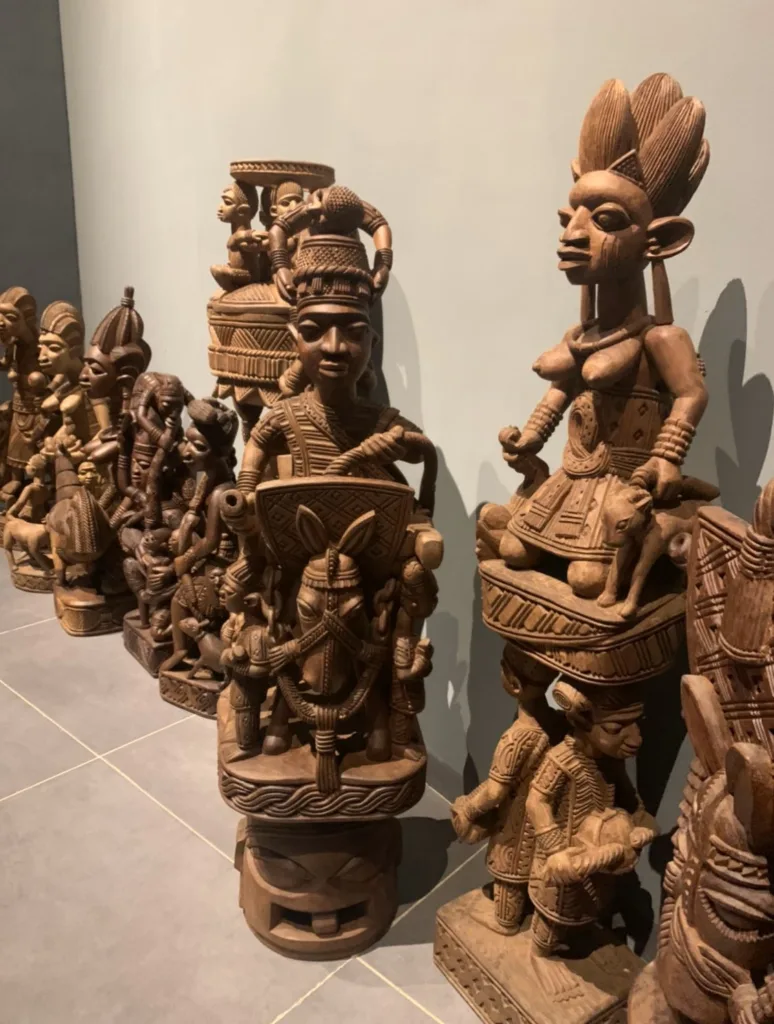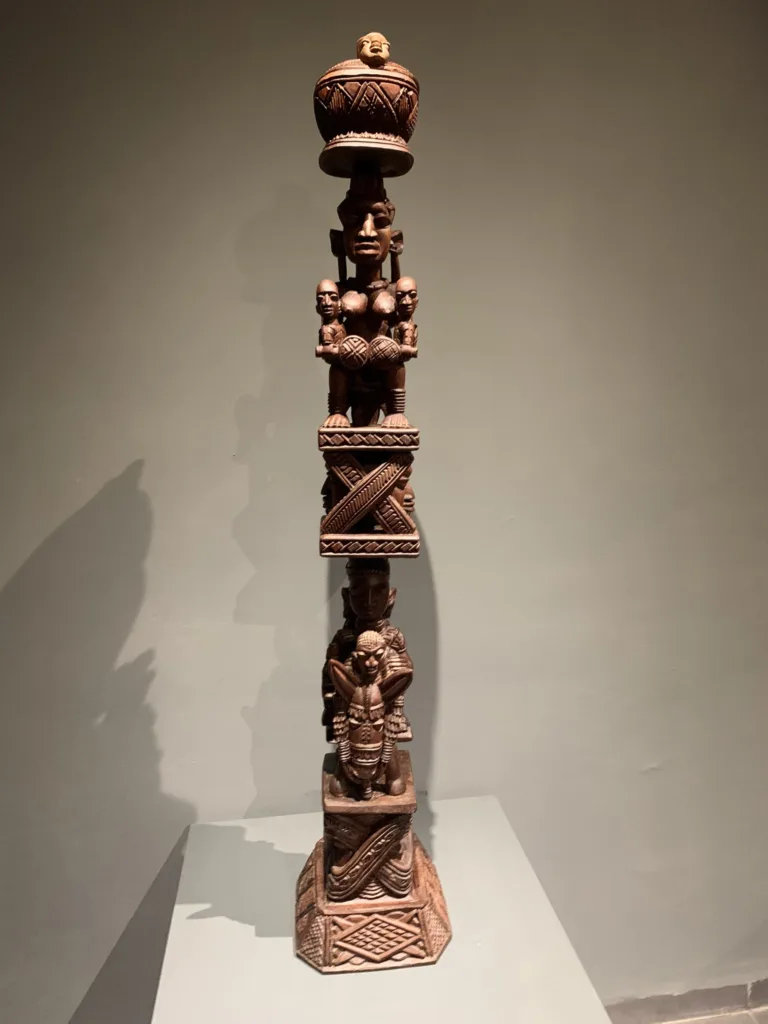The Fakeye family from Nigeria is very prominent in the history of Yorùbá woodcarving, renowned for their exceptional talent in masterful craftsmanship. For generations, the family has perfected an intricate style of carving that has been passed down from father to son. Although the forebears of the family who established the carving tradition for which they are known are no more, subsequent generations in the family continue to carry on their legacy. However, with the introduction of new religions like Islam and Christianity, Western education, and other influences that have gradually overshadowed the traditional style of their works they are faced with challenges of modernity. While preserving the family’s tradition, they have also incorporated significant transformations in their creations. This raises questions about the legacy of the family’s founders and the extent to which their original style has been altered. Làmidi is often mentioned in art historical discussions about the Fákéye family and Yorubá woodcarving, but he is not the only heir of the family’s tradition.

The forebears of the lineage were originally from Ìkòlé in the Èkìtì region of Yorubaland. Oláwoyin, the first master carver, was bestowed with the honorific title “Fakeye” by the King of Ila, which was inherited by his descendants along with the skill and creativity that secured the family’s reputation as expert carvers. He lived in Ayédùn Ìkòlé before he migrated to a place called Ìdí-Emidodo, now known as Omido, in Kwara State. The name Ìdí-Emidodo was derived from the “emidondon” a tree without many leaves, which is used for carving mortar due to its notable strength. Oláwoyin used to frequently visit Omido for the wood before eventually settling there with his people. Omido is located north of Ìlá-Òràngún, on the way to Esie, and it was where Oláwoyin resided and became their Baálè. However, after his death, a bitter family feud arose over who should succeed him as Baálè, leading to the dispersal of the warring parties to Igbájo and Ìla-Òrangún.

Gbogunjókõ the son of Oláwoyin led the group that migrated to Ìlá-Òràngún where they eventually settled and became famous woodcarvers. Gbogunjókõ gained popularity as one of the notable woodcarvers at Ìlá-Òràngún after participating in the annual Orò festival. Oba Ofinni Aniloye, the monarch, was so impressed with Gbógunjókõ’s talent that he rewarded him with the hand of his daughter, Adénùmí, in marriage. Although their son Dàda combined farming with woodcarving and was not a full time carver, his son Fákéye Àkóbí Ògún was dedicated to the family craft and gained widespread recognition in Ìlá-Òràngún.
However, it was Làmidi, Fákéye Àkóbí Ògún’s son, who achieved even greater fame as one of the heirs of the family craft and brought about tremendous development to it. His accomplishments were greatly enhanced by his apprenticeship to Bámidélé of Osi and the Western influence spearheaded in 1947 by Rev. Father Kevin Carroll at the famous Oyé-Èkìtì Roman Catholic workshop and not by the tradition that he inherited from his ancestors. Prior to this, Làmidi struggled to make a living as a woodcarver. Between 1930 and 1940, he faced significant challenges as the demand for woodcarving had dwindled due to the growing influence of Islam and Christianity in Yorubaland. Both religions discouraged the carving profession and considered carvings to be fetish. This led to a noticeable decline in the followership of traditional religion resulting in severe impoverishment of woodcarvers who created objects used in traditional worship.

Through Bámidélé’s influence on Làmídì, the heirs of the Fákéye family craft tradition were able to acquire and master the Èkìtì style. In contrast to the works of the Fákéye lineage’s predecessors which consist of smaller less ornate statuettes and sculptures, the Ekiti woodcarvings were characterized by their large size, sturdiness, and traditional motifs. The Ekiti woodcarvings often depict war stories and scenes of village life, featuring human figures in culturally specific gender roles.
However, it is from these sources that the contemporary Fákéye woodcarvers draw their artistic inspiration and continue to develop their craft. It is therefore apparent that their work is a product of two primary artistic influences: those of their predecessors and those of northeastern Yoruba woodcarvers. The latter has played a significant role in the evolution of their craft over time as well as sociocultural factors, such as religion and western education.

